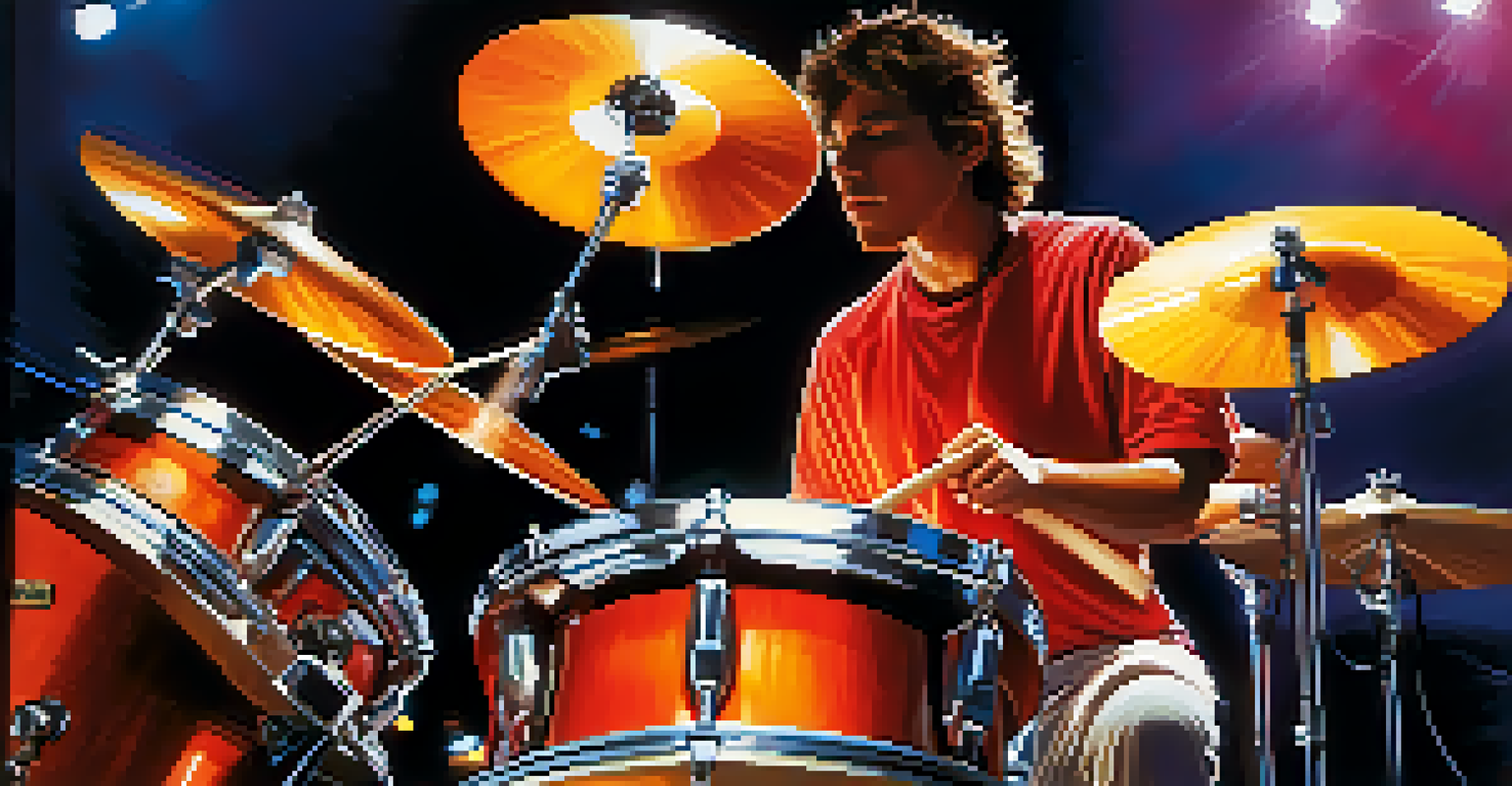How Musical Instruments Utilize Sound Waves: A Physics View

What Are Sound Waves and How Do They Work?
Sound waves are vibrations that travel through air, water, or solid materials. When you pluck a guitar string or blow into a flute, you initiate these vibrations. Essentially, sound waves are created by the movement of particles in a medium, which then move away from the source, carrying the sound with them.
Music is the shorthand of emotion.
These waves can be classified into longitudinal waves, where particles move parallel to the direction of the wave, and transverse waves, where particles move perpendicular to it. This distinction is crucial in understanding how different instruments produce their unique sounds. For instance, string instruments primarily produce transverse waves, while wind instruments generate longitudinal waves.
The characteristics of sound waves, such as frequency and amplitude, determine the pitch and volume of the sound we hear. In simpler terms, frequency relates to how high or low a note sounds, while amplitude affects how loud it is. This foundational knowledge helps us appreciate how various musical instruments utilize sound waves to create music.
How String Instruments Generate Sound Waves
String instruments like violins and guitars produce sound through the vibration of their strings. When a string is plucked, struck, or bowed, it vibrates at specific frequencies, creating sound waves. The length, tension, and mass of the string affect the pitch of the sound produced.

For instance, a shorter, tighter string will produce a higher pitch compared to a longer, looser one. This is why guitarists can change the pitch by pressing down on the frets – they are effectively shortening the vibrating length of the string. The body of the instrument amplifies these vibrations, allowing the sound to resonate and reach our ears.
Sound Waves and Their Mechanics
Sound waves are vibrations that travel through various mediums, with their characteristics determining pitch and volume.
Additionally, the material of the strings and the instrument itself plays a crucial role in shaping the tone. A wooden violin will have a different sound quality compared to a metal-stringed guitar, even if both are played with the same technique. This diversity in sound is what makes string instruments so versatile and beloved in music.
The Role of Air in Wind Instruments
Wind instruments, such as flutes and trumpets, utilize air to generate sound waves. When a musician blows into the instrument, they create a stream of air that sets the air column inside vibrating. This interaction is what produces sound, much like blowing across the top of a bottle creates a tone.
The only truth is music.
The length of the air column can be changed by opening or closing valves or holes, which alters the pitch. For example, when a trumpet player presses a valve, they effectively lengthen the air path, resulting in a lower note. This manipulation of the air column is a key characteristic of wind instruments.
Moreover, the material and shape of the instrument influence the sound. A brass trumpet has a different timbre compared to a wooden clarinet, even when playing the same note. This highlights the fascinating interplay between air and instrument design in producing music.
Percussion Instruments and Vibrating Surfaces
Percussion instruments, like drums and tambourines, produce sound through the vibration of their surfaces. When struck, the drumhead vibrates, creating sound waves that travel through the air. These instruments can produce a wide range of sounds depending on how they are played.
The size and material of the drumhead significantly influence the sound quality. A larger drumhead typically produces deeper tones, while a smaller one yields higher pitches. Additionally, the tension of the drumhead can be adjusted, allowing for further control over the sound produced.
Instruments Shape Sound Production
Different musical instruments generate sound through unique methods, such as string vibrations, air columns, or surface impacts.
This direct interaction with the surface makes percussion instruments unique, as they often rely on rhythm and beat rather than melody. The physicality of striking an instrument creates a visceral connection between the musician and the sound, making percussion a vital part of musical ensembles.
The Science of Resonance in Instruments
Resonance occurs when an object vibrates at its natural frequency, amplifying sound waves. This phenomenon is crucial in musical instruments, as it enhances the sound produced by vibrations. For instance, the body of a guitar resonates with the vibrations of the strings, creating a fuller sound.
Different instruments have unique resonant frequencies based on their shape and materials. A grand piano, with its large wooden frame, resonates deeply, producing rich tones. In contrast, a piccolo generates higher frequencies, resulting in a brighter sound. Understanding resonance helps musicians and builders alike create instruments that maximize sound quality.
Moreover, resonance contributes to the distinct timbre of each instrument. It's what gives a violin its warm, rich sound compared to the bright, sharp notes of a flute. This interplay between sound waves and resonance is a fundamental aspect of how we experience music.
The Impact of Technology on Instrument Sounds
Technology has significantly changed how we create and manipulate sound in musical instruments. From electric guitars to synthesizers, advancements have opened new avenues for sound production. Electric guitars, for example, use pickups to convert string vibrations into electrical signals, which can then be amplified or modified.
Synthesizers take this a step further by generating sound waves electronically, allowing for a vast range of tones and effects. Musicians can experiment with different waveforms, filters, and modulation techniques to create unique sounds that were once impossible. This fusion of technology and music has revolutionized the industry.
Technology Transforms Music Creation
Advancements in technology have revolutionized sound production in music, allowing for innovative creations alongside traditional acoustic instruments.
However, traditional instruments still hold a special place in the hearts of many musicians. The organic sound produced by acoustic instruments offers a warmth and authenticity that technology can't fully replicate. This balance between tradition and innovation continues to shape the landscape of music today.
Understanding the Physics of Music
The physics of music is a fascinating field that combines sound waves, resonance, and technology to explain how we create and experience sound. By understanding the underlying principles, musicians can enhance their skills and create more engaging music. Whether it's knowing how to tune an instrument or how to manipulate sound digitally, physics plays a vital role.
Musicians often intuitively understand these concepts, even if they don't have a deep scientific background. For example, a drummer might instinctively know how to adjust the tension on their drumhead to achieve a specific sound. This practical application of physics in music demonstrates how intertwined these two fields are.

Ultimately, exploring the physics behind musical instruments enriches our appreciation for music. It allows us to recognize the intricate relationship between sound waves, instrument design, and the artistry of performance, leading to a deeper connection with the music we love.